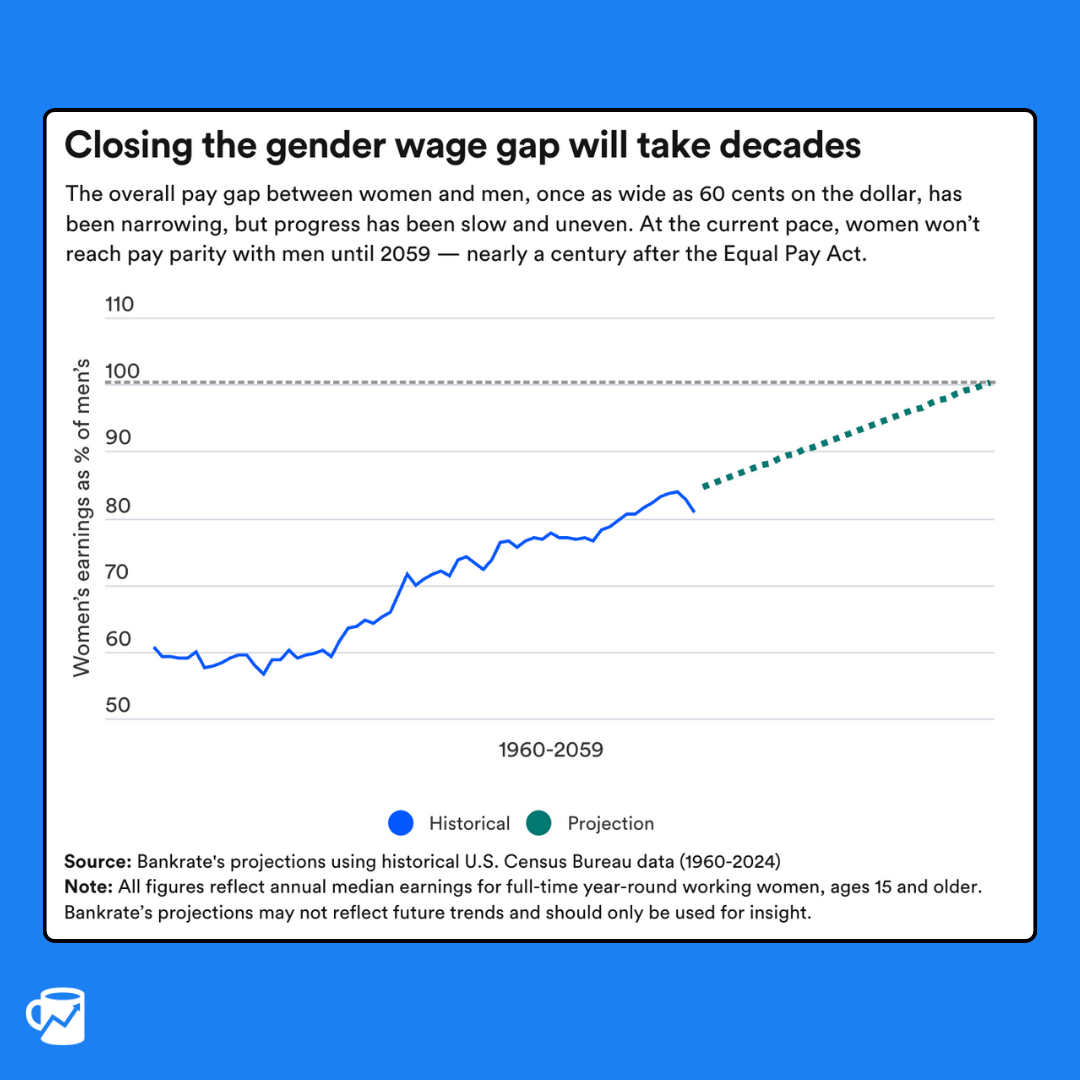

A new Bankrate analysis shows that women working full-time earn about 81 cents on the dollar, with the wage gap actually widening between 2022–2024, the first time in 20 years that progress reversed. Economists say the stall-out is fueled by caregiving expectations, overrepresentation in lower-paying fields, gender bias in promotions, and a culture that makes it harder for women to successfully negotiate raises.
And for women of color, "slow progress" isn't even the right phrase; many Black and Hispanic women may never see pay equality in their lifetimes. That leaves a lot of women spending their working years fighting for raises, burning out in service roles, or stepping back during child-rearing, losing compounding wealth they can't recover later. The Equal Pay Act might be six decades old, but the economic reality won't catch up any time soon, and may actually be moving backwards.
Graphics made using Canva
Data via Bankrate
by Wide-Astronaut9156

9 Comments
x axis labels are the epitome of lazy, i hate it
sorry i said y axis then edited it. need coffee still. how can i tell when the slope changed for example?? what year? also might imply that the entire year range is contained at that single point. no one lables graphs like that
The metric I see used most often is primarily number of hours worked. This in regards to the lie of sexist wage inequality is barely even worth refuting as if it means anything. It’s meaningless.
If women are making the same rate and men, and getting maternity leave, then it will be an extremely discriminatory workplace. The easy solution will be to simply give men equal paternity leave, but that is unlikely to happen. Even if it does, studies show men use less of their vacation time than women and will likely get back to work as soon as possible, this earning more than women and disrupting the balance once again.
Bottom line, the pay gap is not a relevant measure, because people are not the same. Forcing everyone to fit into a gray box 8 hours a day for the mythical GDP is why birth rates are declining and wages stagnating.
This isn’t a pretty visualisation of data. No X axis. No explanation as to dotted v solid line. Legend could have been intergrated into the graph. No uncertainty on the extrapolation. Pass
We should be striving for equal pay for equal work, duh.
But just using top line numbers obscures the whole story.
This may be my most downvoted comment, and I’m sure a lot of people who only know surface level information will comment, but alas:
Why do we want to completely remove the gender pay gap?
What causes the gender pay gap?
One of the reasons women get paid less is because of working less hours, but there’s no “part time pay gap” going around.
Another reason is women not going into oil rigs or coal mines.
My point is, of course, for the same work, everyone of equal output should get paid the same, but if that’s not the case, why are we trying to bridge the gap?
Also, how do we even measure the gap? “median women income divided by median men income” is famous but ridiculous, and Google even did an internal study and found women being paid *more*.
Ah more junk data, good job!
How about we control for same experience doing same type of job? Oh wait…then the wage gap disappears, so we can’t talk about that.
Gotta stick to this narrative that women are paid 80% of what men make. Which if actually true, means businesses would only hire women to increase their profit margins. But they don’t, because it’s not.
Of course women make less overall when you see that school teachers & caregivers, etc.. are primarily women and those roles are paid less than oil drillers & electricians, etc… which are primarily men.
Teachers are underpaid. We should pay them more, men and women. But that’s not exclusively a gender issue.
Stop pushing this BS without context.
We need to stop over-using gender disparities because when its used in this way it loses its meaning.
The majority of the gap is due to women being overrepresented in job groups which tend to pay lower (e.g. teaching, social work, etc.) and because women tend to chose to leave the workforce during peak earning years to take over family care giving responsibilities.
There is still SOME gap directly tied to gender but to say that its entirely gender based is disingenuous and counterproductive.
Facebook has a “laugh” button.